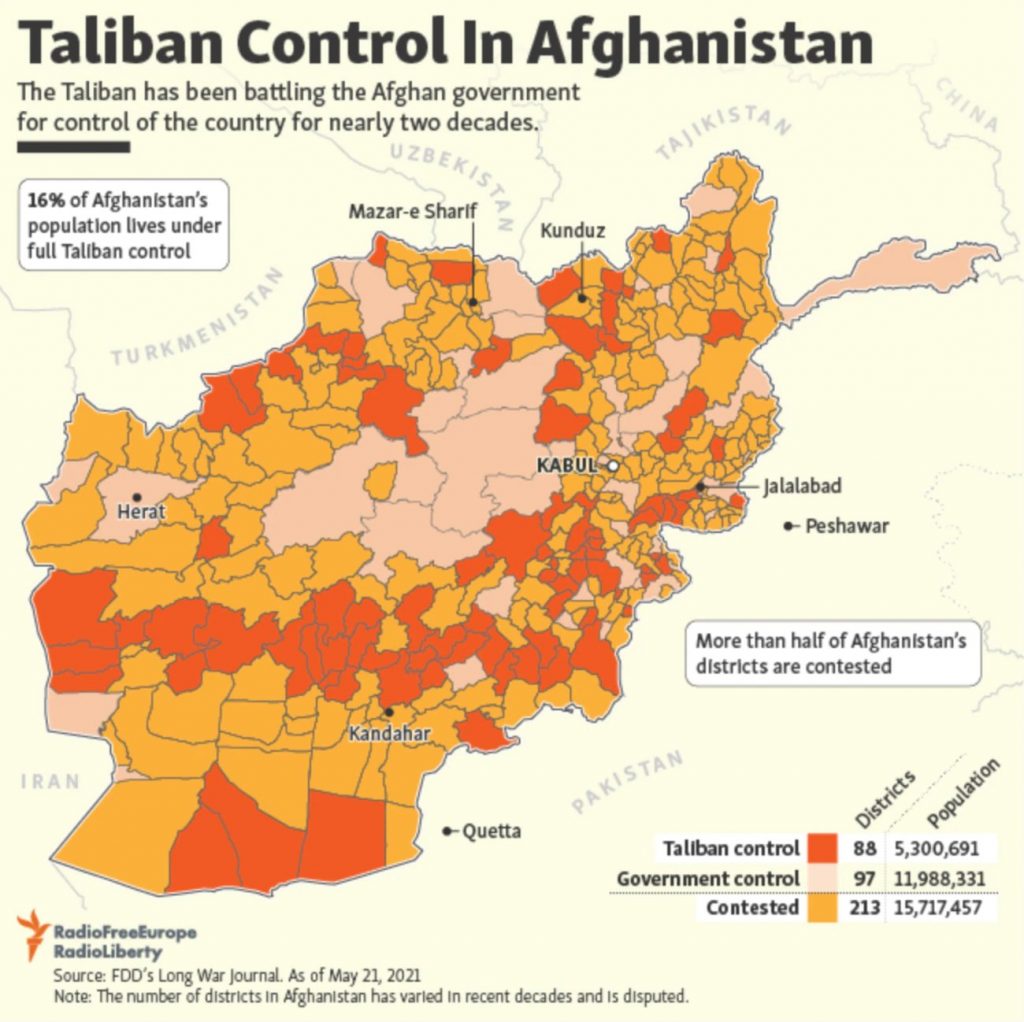WILL THE US EXIT-STRATEGY FROM AFGHANISTAN WILL SUCCEED OR FALTER.
SUHAIB ASHRAF BHAT.
The US exit strategy without completely eradicating terrorism in the region can be equated with the US pack-up just after the Cold War in 1992. They left their most allied ally- Pakistan- at the mercy of terrorists in the offing- the former Mujahideens against the Soviet Union. These Mujahideens turned into the Taliban later and that cost of the US haste exit strategy was suffered by Pakistan. Death of Osama does not mean the end of terrorism. We would not like to go into the controversy of how and why the war on terror began and how best America could muster its results. But the fact remains that the mess created the US in the post-9/11 haste must not be left for Pakistan again.
In a speech on April 14, President Joe Biden announced the withdrawal of American forces from Afghanistan. “It is time to end the forever war,” he declared. Set to begin on May 1, the process will be completed by September 11, 2021, the 20th anniversary of 9/11. What are the implications for Afghanistan, the U.S., and the wider region?
The American withdrawal of troops in Afghanistan has left essential questions of peace in Afghanistan in the air. Without human rights as the primary priority when exiting, there is a risk of violence against the most vulnerable members of society and a potential collapse of the government. The violence has continued in Afghanistan following President Biden’s announcement that American troops will be departing Afghanistan. On May 8th, 2021, a horrific bombing outside Sayed Ul-Shuhada high school is a reminder of the deadly conflict that will continue beyond the American departure. The violent attack is the deadliest attack in 2021.
The Afghanistan Papers report by the Washington Post found that the American government and military officials failed to understand the necessary stabilization strategies and programs to tailor to Afghanistan. As a result, the stabilization in Afghanistan rarely lasted longer than where the coalition troops with physically located. While the stabilization efforts have been abysmal, the cost has been astronomical. According to a Brown University Study, the nearly decade-long war has cost the United States a total of 2.26 trillion dollars. It will continue to cost Americans upon their departure from the region.
The Biden administration decision to disengage militarily from Afghanistan by September 11 may seem warranted, perhaps even overdue, after a commitment of two decades.
After the Soviets bailed out of Afghanistan in 1989, the U.S. decided that it had little stake in what happened in the country and the region. Virtually all government assistance ceased. America decided to let the Afghans sort out their differences and left Pakistan, erstwhile partner in the jihad against communism, to fend for itself in coping with the fallout of the decade-long Afghan conflict. What America got in Afghanistan was a bloody, anarchic, fratricidal civil war, the rise of the Taliban and the settling in of Al-Qaeda.
For the first time in two decades, the United States says it will have no troops and contractors in Afghanistan and the CIA and Special Forces teams that have led the search for Al Qaeda’s remaining operatives will no longer work from bases in the eastern part of the country.In recent days, the Pentagon began a “retrograde” of its forces in the country, which include what it says are some 2,500 service members, a few hundred special operations troops and some 18,000 contractors. NATO is conducting its own drawdown. The withdrawal could be complete as early as July. President Biden placed a Sept. 11 deadline for the pullout, 20 years after the Al Qaeda terrorist attacks in the U.S.Biden administration officials say that the threat from Al Qaeda has been sharply reduced since the U.S. invasion in 2001 and that it will be possible to keep tabs on the militant groups in Afghanistan from outside the country. Even before Al Qaeda leader Osama bin Laden’s killing in 2011 in Pakistan, the group’s ranks were decimated and much of its leadership killed or captured.
If a threat of a terrorist attack on the United States or its interests is detected, the Biden administration officials insist, the Pentagon or CIA could strike inside landlocked Afghanistan — with air attacks from faraway bases or Special Forces teams inserted on so-called “capture or kill missions.”
“We will maintain an over-the-horizon capability to suppress future threats to the homeland,” Biden said in an address to Congress. He added that Afghanistan is no longer the only location from which militants threaten the U.S and its allies, naming Yemen, Syria, Somalia and “other places.”
Fighter planes flying from aircraft carriers and longer-range bombers from air bases in the Persian Gulf, Indian Ocean and even the United States could strike insurgent fighters whose locations are fixed by surveillance drones, communications intercepts and informant networks.
But many uncertainties remain about that strategy, including whether any of Afghanistan’s neighbours will agree to let the U.S. base forces or surveillance drones on their territory. If not, the U.S. will have to rely on forces operating from American bases in the Persian Gulf.
Al Qaeda of 2021 is a far smaller organization with less reach, while the United States has built a counter-terrorism capability and familiarity with Afghanistan far exceeding anything it had before 2001.
“There will be some degradation in terms of our ability to know exactly what’s going on,” Zalmay Khalilzad, the administration’s negotiator on Afghanistan, told the Senate Foreign Relations Committee. “But we believe, given the nature of the threat right now that we would get adequate warning.”
Al Qaeda has fewer than 200 members in south Asia, most of them in Afghanistan, Lt. Gen. Scott Berrier, the head of the Defence Intelligence Agency, said. The group’s second-ranking leader, Ayman Zawahiri, though suffering severe health problems, is still believed to be alive, hiding possibly in Afghanistan, while other leaders are said to be in Iran, according to the agency.
“There was little discernible activity out of the group” last year and “throughout 2021, [Al Qaeda] very likely will be unable to conduct terrorist attacks,” Berrier added, in written testimony to the Senate Armed Services Committee. Instead, the group will “bolster its relationship with the Taliban.” That relationship is the core U.S. concern.Under the terms of a 2020 withdrawal agreement with the Trump administration, the Taliban vowed to prevent Afghan territory under its control from being used by terrorist groups to launch attacks on the U.S. and its allies. U.S. officials insist that the deal requires the Taliban to sever its ties with Al Qaeda, but U.S. intelligence officials do not expect that to occur.
What happens to that deal after Biden delayed Trump’s May 1 withdrawal date is unclear. Despite publicly distancing themselves from Al Qaeda in private talks with U.S. officials, the Taliban “very likely maintains close ties with the militants at the local level, often through family ties due to years of intermarriage” in Afghanistan and Pakistan, said a senior U.S. official familiar with intelligence assessments about the relationship. A statement posted on the “Voice of Jihad” Taliban website in October said the group had no obligation to sever ties with Al- Qaeda under the U.S.-Taliban deal, the official noted.
Taliban representatives, however, insist they can contain any extremists on Afghan soil. “Al Qaeda was in Afghanistan before Taliban. All those countries now complaining about them supported them at the time of the Soviet invasion, and we now inherited them,” said Suhail Shaheen, a Taliban representative in Qatar.




